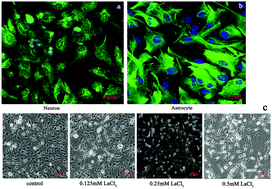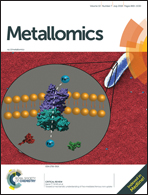Conditioned medium from overly excitatory primary astrocytes induced by La3+ increases apoptosis in primary neurons via upregulating the expression of NMDA receptors
Abstract
Lanthanum (La) can accumulate in the brain and impair learning and memory. However, the underlying mechanism of La-induced neurotoxicity has remained elusive. Under physiological conditions, it has been reported that moderately excitatory astrocytes play an important role in the regulation of neuronal signals and synaptic plasticity. However, under pathological conditions, overly excitatory astrocytes can release excess excitatory transmitters, such as glutamate (Glu) and D-serine, and induce the over-activation of NMDA receptors (NMDAR) in neurons, ultimately leading to neuronal excitotoxicity. To date, limited work has been performed with respect to whether La can induce neuronal excitotoxicity by inducing astrocytes to become overexcited. In this study, in vitro models of primary culture rat cortical astrocytes and neurons were established. First, the astrocytes were treated with 0.125 mM, 0.25 mM and 0.5 mM lanthanum chloride (LaCl3) for 24 h, and the supernatants were collected as a conditioned medium (CM) which is denoted as CM (La3+); then, the neurons were treated with CM (La3+) for 48 h. The results illustrate that LaCl3 treatment significantly upregulated the mRNA and protein expression levels of metabotropic glutamate receptor 5 (mGLUR5), phospholipase C (PLC), connexin 43 (Cx43) and Cx30, increased the concentrations of inositol trisphosphate (IP3) and [Ca2+]i, and promoted the synthesis and release of Glu and D-serine in astrocytes. Moreover, the CM (La3+) could increase the mRNA and protein expression levels of NMDAR subunits (NR1, NR2A, NR2B), the concentration of [Ca2+]i and the rate of apoptosis in neurons. Furthermore, after removal of La, CM (La-free) had a similar effect on neurons which could be antagonized by MK-801, DCKA and DAAO. These results suggest that the neuron apoptosis induced by La is closely related to the excessive release of Glu and D-serine from overly excitatory astrocytes.



 Please wait while we load your content...
Please wait while we load your content...